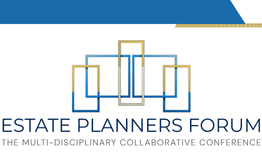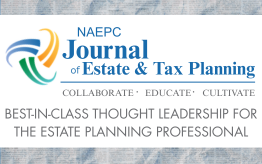March, 2008 Newsletter
Provided by Leimberg Information Services
See other issues.
Notice 2008-32 – Interim Guidance on 2% Floor
Byrle M. Abbin is a nationally known authority in Federal taxation, specializing in estate planning matters, specifically wealth succession planning and family business continuity for those with significant high personal worth. Byrle has spoken for the American Law Institute-American Bar Association (ALI-ABA) large estates course, and a number of presentations and workshops at the Heckerling Institute on Estate Planning and has served on its advisory board.
Byrle brings us the latest on the Knight (Rudkin) 2% floor story.
EXECUTIVE SUMMARY:
In Notice 2008-32 the IRS provides interim guidance regarding the treatment of "bundled" fees, i.e. fees that represent investment advisory costs and other expenses that are subject to the 2% floor and that are grouped together as part of one commission or fee paid by a trustee or an executor. (i.e., expenses incurred by a trust other than a grantor trust (nongrantor trust) or an estate.)
FACTS:
BACKGROUND:
On January 16, 2008, the Supreme Court of the United States issued its decision in Michael J. Knight, Trustee of William L. Rudkin Testamentary Trust v. Commissioner, 552 U.S. ___, 128 S. Ct. 782 (2008), holding that costs paid to an investment advisor by a nongrantor trust or estate generally are subject to the 2-percent floor for miscellaneous itemized deductions under § 67(a).
The IRS and the Treasury Department expect to issue final regulations under § 1.67-4 of the Income Tax Regulations consistent with the Supreme Court's holding in Knight.
The final regulations also will address the issue raised when a nongrantor trust or estate pays a Bundled Fiduciary Fee for costs incurred in-house by the fiduciary, some of which are subject to the 2-percent floor and some of which are fully deductible without regard to the 2-percent floor.
The final regulations, however, will not be issued prior to the due date for filing 2007 income tax returns (determined without regard to extensions), and will apply only prospectively.
Accordingly, in light of the Supreme Court's decision in Knight, the IRS and the Treasury Department are providing interim guidance that specifically addresses the treatment of a Bundled Fiduciary Fee.
WHAT NOTICE 2008-32 PROVIDES:
-
Taxpayers will not be required to determine what portion of a "Bundled Fiduciary Fee" is subject to the 2% floor under section 67 for any taxable year beginning before January 1, 2008.
-
Instead, for each such taxable year, taxpayers may deduct the full amount of the Bundled Fiduciary Fee without regard to the 2-percent floor.
-
Payments that are made directly to third parties for expenses subject to the 2% floor, such as advisory fees considered in the Knight Supreme Court decision, that are readily identifiable as encompassed by that decision, must be treated separately from bundled fees, and in are subject to the 2% non-deductible floor for tax returns currently being filed by fiduciaries.
-
The IRS and the Treasury Department anticipate that final regulations under § 1.67-4 will be published without delay after the extended comment period granted in this Notice.
-
The final regulations may contain one or more safe harbors for the allocation of fees and expenses between those costs that are subject to the 2-percent floor and those that are not.
-
Any safe harbors in the final regulations for determining the allocation of a bundled fiduciary fee between costs subject to the 2-percent floor and those not subject to the 2-percent floor may be available for taxpayers to use for taxable years beginning on or after January 1, 2008.
COMMENT:
An aspect of the application of Code section 67 to fiduciaries that has generated little attention is the complexity required for calculation of the 67(e) non-deductible portion under certain circumstance.
The calculation of DNI [distribiutable net income] under sec. 643 is dependent upon the amount of administration expense deduction, as it is reduced by applying section 67(e). Yet this same 2% reduction is computed after a distribution deduction is reflected.
These are termed interdependent variables and require application of simultaneous equation, in order to determine each element, e.g. the amount of DNI and the 2% reduction.
The mathematic calculation is set forth by means of an example on pages 21 and 22 of the 2007 Instructions for Form 1041. This requirement is likely to give trustees and tax preparers concern -if not an unexpected challenge.
[This paragraph is adopted from Abbin, Income Taxation of Fidiuciaries and Beneficiaries, Par 410.1 2008 ed. CCH].
HOPE THIS HELPS YOU HELP OTHERS MAKE A POSITIVE DIFFERENCE!
Byrle Abbin
CITE AS:
LISI Estate Planning Newsletter # 1253 (February 27, 2008) at http://www.leimbergservices.com/ Copyright 2007 Leimberg Information Services, Inc. (LISI). Reproduction in Any Form or Forwarding to Any Person Prohibited – Without Express Permission.
CITES
NOTICE 2008-32
All NAEPC-affiliated estate planning councils are eligible to receive a discounted subscription rate to the Leimberg LISI service. Please see more information about the offering. You may also contact your local council office / board member to find out whether they are offering the service as a member benefit.





